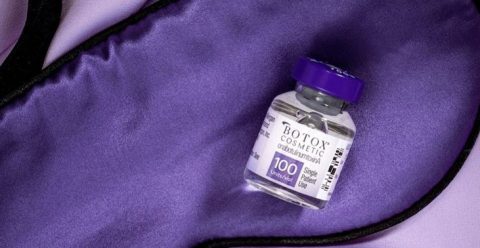Botox Injection Post-treatment instructions

After receiving Botox injections, it’s crucial to follow specific post-treatment instructions to ensure optimal results and minimize the risk of complications.
These instructions encompass various aspects, including avoiding certain activities, maintaining proper skincare, and attending follow-up appointments. Adhering to these guidelines helps promote a smooth recovery process and enhances the effectiveness of the treatment.
1. Avoid touching the treated area:
Refrain from touching or rubbing the injected area for at least 24 hours post-treatment , This reduces the risk of spreading the toxin to unintended muscles.
2. Stay upright:
Maintain an upright position for at least four hours after the treatment. Avoid lying down or bending over excessively to prevent the spread of the toxin to unintended areas.
3. Avoid strenuous activities:
Refrain from engaging in strenuous physical activities, such as vigorous exercise or heavy lifting, for the remainder of the day post-treatment. Excessive movement can spread the toxin and potentially affect muscle function.
4. Avoid alcohol consumption:
Limit alcohol consumption for at least 24 hours post-treatment. Alcohol can increase the risk of bruising and may interfere with the body’s healing process.
5. Apply ice packs:
If experiencing swelling or discomfort at the injection site, apply ice packs wrapped in a cloth for 10-15 minutes at a time. Avoid direct contact between the ice pack and the skin to prevent frostbite.
6. Avoid heat exposure:
Refrain from exposure to excessive heat, such as saunas, hot tubs, or prolonged sun exposure, for at least 24 hours post-treatment. Heat can increase blood flow to the treated area and potentially spread the toxin.
7. Follow-up appointments:
Attend any scheduled follow-up appointments with your healthcare provider if you need to assess the results and address any concerns or questions you may have.
8. Avoid massaging the area:
Do not massage or manipulate the treated area for at least 24 hours post-treatment. Massaging can cause the toxin to spread to unintended muscles and affect the overall results.

9. Stay hydrated:
Drink plenty of water post-treatment to help flush out toxins and promote healing. Proper hydration is essential for overall skin health and recovery.
10. Avoid facial treatments:
Refrain from undergoing any facial treatments, such as facials, chemical peels, or microdermabrasion, for at least one weeks post-Botox injection. These treatments can interfere with the settling of the toxin and affect the results.
11. Avoid blood-thinning medications:
If possible, avoid taking blood-thinning medications, such as aspirin or ibuprofen, for at least 24 hours post-treatment. These medications can increase the risk of bruising at the injection site.
12. Limit facial expressions:
Try to limit excessive facial expressions, such as frowning or squinting, for the first few hours post-treatment. Minimizing muscle movement in the treated area can help enhance the effectiveness of the Botox.
13. Be patient:
It may take several days to notice the full effects of the Botox treatment. Be patient and allow the toxin to take its full effect before assessing the results.
14. Avoid sleeping on your face:
If possible, avoid sleeping on your face for the first night post-treatment. Sleeping on the treated area can cause the toxin to spread to unintended muscles.
15. Report any adverse reactions:
If you experience any severe or unusual side effects, such as difficulty breathing, excessive swelling, or muscle weakness, contact your healthcare provider immediately.
16. Follow skincare routine:
Continue with your regular skincare routine post-treatment. However, avoid applying excessive pressure or massaging the treated area when cleansing or applying skincare products.
17. Use sunscreen:
Protect the treated area from sun exposure by applying a broad-spectrum sunscreen with a high SPF. Sun exposure can degrade the effectiveness of Botox and increase the risk of hyperpigmentation.
18. Avoid facial treatments:
Refrain from undergoing any facial treatments, such as facials, chemical peels, or microdermabrasion, for at least two weeks post-Botox injection. These treatments can interfere with the settling of the toxin and affect the results.
19. Avoid excessive makeup:
Limit the use of makeup on the treated area for the first 24 hours post-treatment. Makeup application may increase the risk of infection or irritation at the injection site.
20. Follow-up with your healthcare provider:
If you have any questions or concerns during the recovery process, don’t hesitate to contact your healthcare provider for guidance and support. They can provide personalized advice based on your specific needs and concerns.
21. Next Session Maintenance:
Plan for a follow-up session with your healthcare provider approximately 4-6 months after your initial Botox treatment to maintain the desired effects. Regular sessions can help sustain the smooth appearance of your skin by preventing the reappearance of wrinkles and fine lines as the effects of Botox gradually wear off over time. During this follow-up appointment, your healthcare provider can assess the longevity of your results, make any necessary adjustments to your treatment plan, and recommend additional sessions as needed to prolong the youthful appearance of your skin. By staying proactive and scheduling regular maintenance sessions, you can enjoy long-lasting benefits and consistently refreshed facial aesthetics with Botox.
